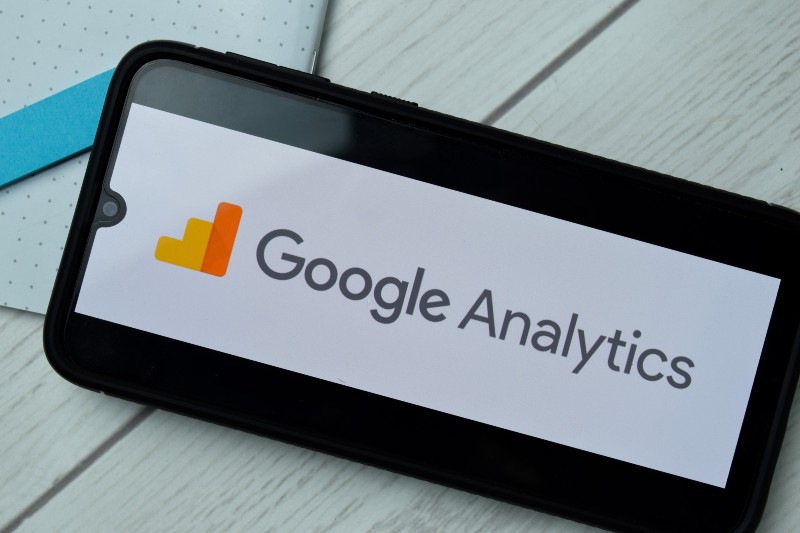New Google Analytics 4 Platform Worth It?
Google Analytics (GA) isn’t the easiest tool to navigate, understand, or use, and yet potentially crucial for your business growth. When you have devoted some time to get familiar with it, it might be distressing to hear about a new version of Analytics that Google introduced in October 2020, already available on the platform. You might start wondering if it’s worth switching to Google Analytics 4, or is your current knowledge of Analytics still relevant?
Before we get too deep into this — if you find any part of this complicated or frustrating and need help understanding how metrics can help you, contact us at IMG, and we can help you understand how you can improve sales with metrics.
Dealing with new versions of the tools you’ve just learned or have been using for quite a long time may seem daunting and frustrating, but it doesn’t have to be. Although it can get annoying to switch to the new version of the tool, Google Analytics 4 has many advantages and better data collection to improve your website experience and brand visibility. For that reason, it’s worth checking out. If you are wondering about the pros and cons of the update, we’ve gathered all the necessary information to help you better understand Google Analytics 4 and help you to decide if the new version of Analytics is worth using for your business.
What is Google Analytics 4?
Businesses of any kind and scale use Google Analytics to collect all the necessary information regarding the website statistics such as traffic source, behaviors on your website, data about the audience, popular pages, conversions, etc. In short, the web analytics tool helps you better understand your customers’ preferences so that you can create better experiences for them. Now that more businesses are switching to eCommerce amid the COVID-19 pandemic, insights from Analytics have become even more critical. Therefore, in October 2020, Google announced a new version of Analytics — Google Analytics 4 — the new product in its platform and the most significant change to Google Analytics in a pretty long time.
Google Analytics 4 is the latest tracking platform in Google’s web analytics. The new property offers reports that universal analytics didn’t have, promises better ROI from your marketing, and more innovative insights to help you fine-tune your marketing strategy.
What’s New?
Google Analytics 4 – previously known as “App +Web,” offers different reports than Universal Analytics properties. The most significant advantage of the new property is that you can use it for your website or App, or both simultaneously. In contrast, Universal Analytics properties only support websites.
Al-Powered Insights
The new version of Analytics also has new Al-powered insights and predictions that can automatically alert you about crucial data trends like a surging demand for one of your products. It can also help you anticipate your customers’ future actions. For instance, Google Analytics 4 calculates churn probability, which can help efficiently invest in retaining customers and direct your marketing efforts in the right direction. In addition, predictive metrics can help target those customers in your ads who are more likely to make a purchase, so your ad campaigns will be more cost-effective and bring higher ROI.
Google continues to add new predictive metrics to the tool, such as the potential revenue you could earn from a specific group of consumers, which will allow you to reach higher-value customers and increase revenue.
Event Tracking
While Universal Analytics includes page hits, event hits, eCommerce hits, and social interaction hits, Google Analytics 4 data is entirely event-based, with the concept that any interaction can be captured as an event.
Events in GA4 are triggered by user interactions on your website or in apps. The new Google Analytics 4 will automatically track several events when users interact with your App or website – something that its precursor GA3 can’t do. Automatically tracked events can help you better understand how users interact with your site or App and better track the results of your marketing campaigns. For instance, ad_click is triggered when a user clicks an ad, or the first_visit event is triggered when a user visits a website or launches an instant Android app for the first time. Automatically collected events don’t require additional configuration and are sent to Google Analytics by the global site tag. Click here to see what events are tracked automatically in GA4.
Customer-Centric Measurements
Google Analytics 4 will provide you with a better understanding of your customer’s interaction with your business. Instead of customer measurements fragmented by devices or platforms, the new property offers a new customer-centric measurement showing a whole picture from the beginning till the end of the interaction. In addition, it provides a complete picture of customers’ journey to the purchase, using multiple identity spaces, including marketer-provided User IDs and unique Google signals. So, for instance, you can see if customers first discover your business from an ad on the web and then later download and install your App to make purchases there.
Advertising Workspace
Google Analytics 4 also features new integrations with numerous Google marketing platforms to use the data across all your channels and improve the ROI of your marketing campaigns.
The Advertising workspace in Google Analytics 4 simplifies advertising. Here you can link your Google Analytics 4 property to your Google Ads account(s) and access detailed reports about your Google Ads campaigns. Now it’s easier to find reporting, tools, and resources necessary to achieve your advertising objectives when using Google Analytics 4 properties.
Currently, there are three reports in the Advertising workspace of Google Analytics 4:
- Advertising snapshot provides a quick overview of business metrics, and here, you can dive deeper into the areas you want to explore.
- Model comparison allows you to compare how different attribution models impact the valuation of your marketing channels.
- Conversion paths let you see your customers’ paths to conversion and learn how different attribution models distribute credit on those paths.
The Pros and Cons of Google Analytics 4:
Like any other tool, Google Analytics 4 comes with pros and cons, and we have listed some below to help you better understand what to expect from the new GA property.
Pros of GA4:
- Cross-platform tracking
- Smart Al-Powered Insights
- Simplified Advertising
- The whole picture of customers’ journey
- Automatically Collected Events
- Improved ROI
Cons of GA4:
- The new user interface, which you would have to learn
- GA4 is still work-in-progress and will still be modified in the future
- It takes time to learn and transition to the new version of GA4
- Some UA reports are still missing in GA4, such as timing
Should I Switch to Google Analytics 4?
If you’re still contemplating whether it’s worth giving GA4 a try, keep in mind that Google allows businesses to use GA4 and Universal Analytics together, so you won’t have to give up your UA features when upgrading to GA4. Considering that, there’s no reason for you to avoid the new Analytics so you can update and see if it works well for your business goals. Also, you can keep using UA while getting familiar with GA4, so there’s absolutely no risk in upgrading to GA4.
The earlier you switch to GA4, the better, as it’ll have more time for collecting and interpreting data for better AI-powered insights you can use in the future.
Helpful Resources
Switching to a new tool can raise many questions and concerns already answered in online guides and tutorials. Some of the ones we found helpful while upgrading to GA4 include:
- Google Analytics 4 1-hour Video Tutorial from Analytics Mania – Google Tag Manager & Analytics where you can learn how to get started with Google Analytics 4: installation, interface, reports, conversions, configuration, and more.
- Google Analytics 4 training & tutorial with free GA4 eBook from Optimize Smart
- Guide to Google Analytics 4 Properties from Google
The Analyst’s Guide to Google Analytics 4 by Ken Williams - Google Analytics 4 Properties: Everything You Need to Know by Samantha Barnes
Recommended courses:
- Google Analytics 4 Course 1: Reporting & Analysis – KS Digital Academy
- Become great at Google Analytics 4 – CX Optimization Agency



